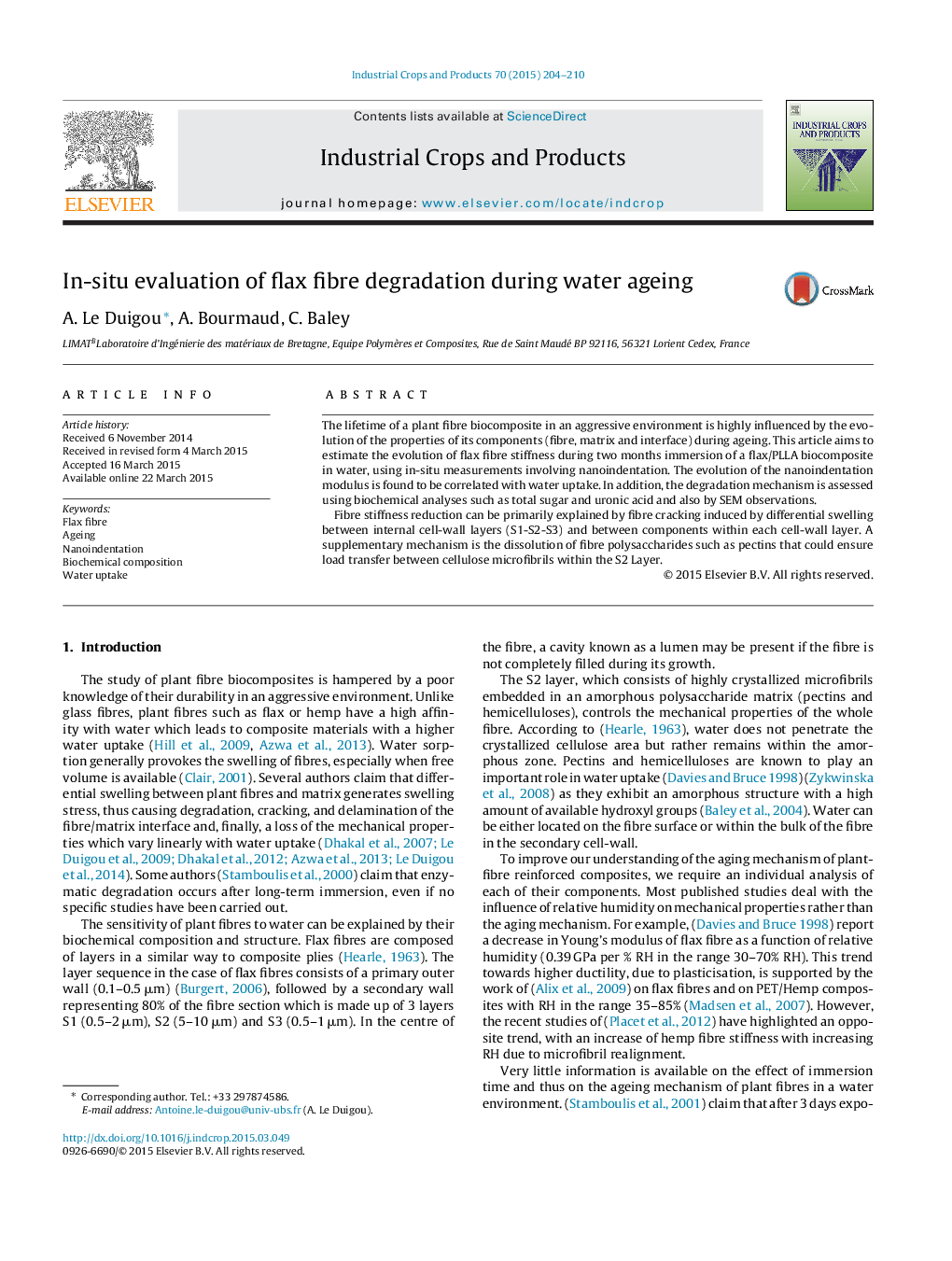| Article ID | Journal | Published Year | Pages | File Type |
|---|---|---|---|---|
| 4512892 | Industrial Crops and Products | 2015 | 7 Pages |
•Single flax fibre stiffness evolution during two month immersion by nanoindentation.•Degradation mechanism is evaluated by SEM observation combined with sugar analysis.•Fibre stiffness reduction is due to dissolution of polysaccharides such as pectins.
The lifetime of a plant fibre biocomposite in an aggressive environment is highly influenced by the evolution of the properties of its components (fibre, matrix and interface) during ageing. This article aims to estimate the evolution of flax fibre stiffness during two months immersion of a flax/PLLA biocomposite in water, using in-situ measurements involving nanoindentation. The evolution of the nanoindentation modulus is found to be correlated with water uptake. In addition, the degradation mechanism is assessed using biochemical analyses such as total sugar and uronic acid and also by SEM observations.Fibre stiffness reduction can be primarily explained by fibre cracking induced by differential swelling between internal cell-wall layers (S1-S2-S3) and between components within each cell-wall layer. A supplementary mechanism is the dissolution of fibre polysaccharides such as pectins that could ensure load transfer between cellulose microfibrils within the S2 Layer.
